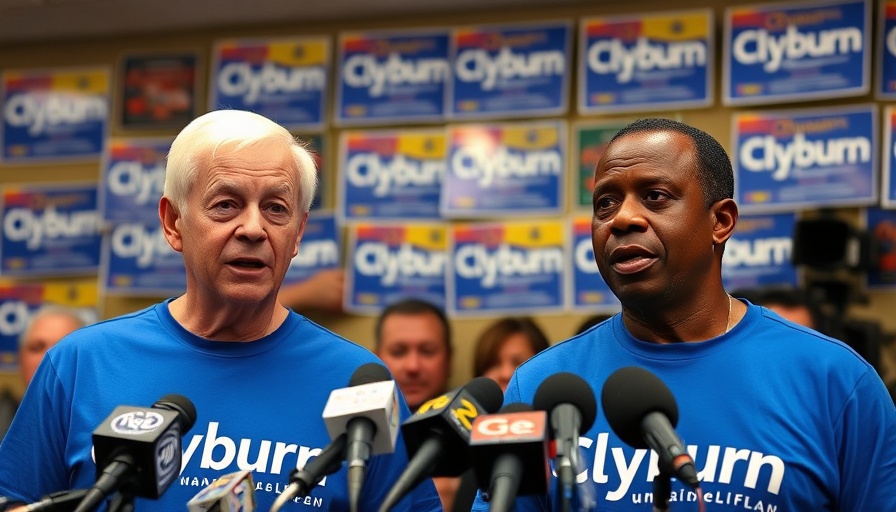
The Early Bird Gets the Worm: Democrats Eyeing 2028
With over two years until the first votes are cast in the 2028 presidential race, the political landscape is buzzing with activity among prospective Democratic candidates. While voters in early primary states like South Carolina, New Hampshire, and Iowa are accustomed to seeing future presidential contenders, the early interest shown by Democrats signals a deeper urgency as the party seeks to re-establish its leadership and message.
Facing a Leadership Vacuum: The Stakes Are Higher
The Democratic Party is grappling with the repercussions of losing the White House and both chambers of Congress in 2024. This frustration is accompanied by a notable lack of leadership that has compelled a new generation of candidates to step forward. Figures such as California's Governor Gavin Newsom and Kentucky's Governor Andy Beshear are at the forefront, signaling their readiness to lead the party into a more hopeful future.
Who’s Hot in the Race: Key Candidates to Watch
The drive toward future campaigning is spearheaded by various prominent figures, including Gov. Gavin Newsom, who recently visited South Carolina and was met with enthusiasm calling for a “2028” run. The presence of moderate and progressive candidates like Congressman Ro Khanna and former Chicago Mayor Rahm Emanuel adds further complexity to the landscape, fostering a blend of diverse ideologies within the party.
Current Trends and Future Forecasts: What Lies Ahead?
As the Democrats reposition themselves, there are key trends that could shape the future of the race. With no incumbent running in the next presidential elections, optimism resurfaces within the party. Leaders are trying to bridge gaps and appeal to vast demographics — especially crucial overlooked communities — to reshape their image. This repositioning is not just about reclaiming lost ground; it’s about ensuring relevancy in an ever-evolving political climate.
The Power of Presence: Campaigning Early
Showing up early in key states is a strategic move that many candidates are adopting. This approach allows them to build name recognition and rapport with voters, which is critical when the competition could be vastly different a few years down the line. Major players like Beshear, who aim for the Black and union voters in South Carolina, illustrate the need to connect with the party's base long before official campaigning begins.
What Does This Mean for the Voters?
For voters in Democratic strongholds, this early jockeying generates excitement, but also raises questions. For many, the rush of candidates might feel overwhelming or off-putting, leaving observers to ponder: who will genuinely represent their aspirations? The need for thoughtful and engaging dialogue is essential during these formative years, allowing citizens to voice their hopes and needs moving forward.
Conclusion: The Race is On
In this fascinating prelude to the 2028 presidential race, the growing list of potential candidates reflects a broader ambition within the Democratic Party to redefine its narrative. Voter engagement will be crucial as candidates vie to connect with the public, ensuring that the 2028 elections are not just a contest for the nomination, but a chance for the party to unite under a shared vision for the future.
 Add Row
Add Row  Add
Add 




Write A Comment